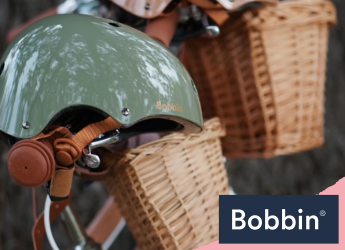What Size Bike Helmet Should I Get?
We’ve said it before, and we’ll say it again: nothing is more important than a properly fitting bike helmet. This cycling safety rule should always be at the forefront of your mind. But here’s the question: what size should you get?
It may seem simple, but finding the perfect fit can be more complex than you think. We’re here to guide you through the process to ensure you’re safe every time you hit the road or trail. Ready?
Bike Helmet Sizes
Bike helmet sizes refer to the range of head circumferences a helmet is designed to fit. A too-loose helmet might slip off, while one that is too tight can cause discomfort or pressure points. The sizing systems can vary depending on the manufacturer and brand. But there are two common sizings widely used:
- Circumference-based sizing: This relies on the head measurement and can be in cm or inches. The helmet’s inner circumference should match your head size. Use a size chart provided by the manufacturer to measure.
- Head shape-based sizing: Some manufacturers take head shape variations into account. Different head shapes may require different helmet models, even if the head circumference falls within the same range. Manufacturers often offer models specifically designed to accommodate various head shapes.
Bike helmets are usually labelled with size descriptors: small, medium, large, or extra-large. For instance, a small-sized helmet is suitable for 52cm to 56cm (20.5 to 22 inches). A medium-sized helmet could cover head circumferences of 56cm to 59cm (22 to 23.2 inches), while a large-sized helmet may accommodate head sizes from 58cm to 63cm (23.2 to 24.8 inches).
These measurements provide a general guideline for finding the correct size. But always refer to the specific manufacturer’s size chart for precise measurements.
Measuring Your Head
To get the correct size for your bicycle helmet, you’ll need to measure your head accurately. Follow these step-by-step instructions to ensure precise measurements:
- Place the measuring tape or string around your head, just above your eyebrows. Wrap it around the widest part of your skull.
- Make sure the tape is level and snug but not too tight or too loose. It should sit comfortably on your forehead and the back of your head.
- Note the measurement in centimetres or inches. The measuring tape or string you use will determine this.
- Perform the measurement a couple of times to ensure consistency and accuracy. For the most precise result, take the average of the measurements
How to Get the Right Helmet Size
Most helmet manufacturers provide size charts that correlate head measurements with helmet sizes. Locate the size chart specific to the helmet brand and model you are interested in. Find the range of head circumferences or dimensions that corresponds to your measurement.
Here’s an example of a size chart:
|
Helmet Size |
Head Circumference (cm) |
Head Circumference (inches) |
|
Small |
52-56 |
20.5-22 |
|
Medium |
56-59 |
22-23.2 |
|
Large |
59-63 |
23.2-24.8 |
|
X-Large |
63-66 |
24.8-26 |
If the measurement falls within the chart range, choose the corresponding helmet size. Otherwise, consider these alternative options:
- Opt for the smaller size if you prefer a snugger fit;
- Choose the larger helmet if you prefer a more relaxed fit. Or if the smaller size is at the upper limit of the manufacturer’s recommendation.
Helmet fit can vary between brands and models. If possible, try on different sizes within the recommended range. Also, consider the helmet’s adjustability features, such as retention systems and straps. This can help fine-tune the fit for added comfort and stability.
Your head deserves nothing less than the best. Choose the right size bike helmet to guarantee your safety and comfort while cycling. If you’re ready to shop, browse our range from kids helmets to adult helmets.
Should you have any questions, feel free to contact us. Next on your reading list: How Should Your Bike Helmet Fit?











